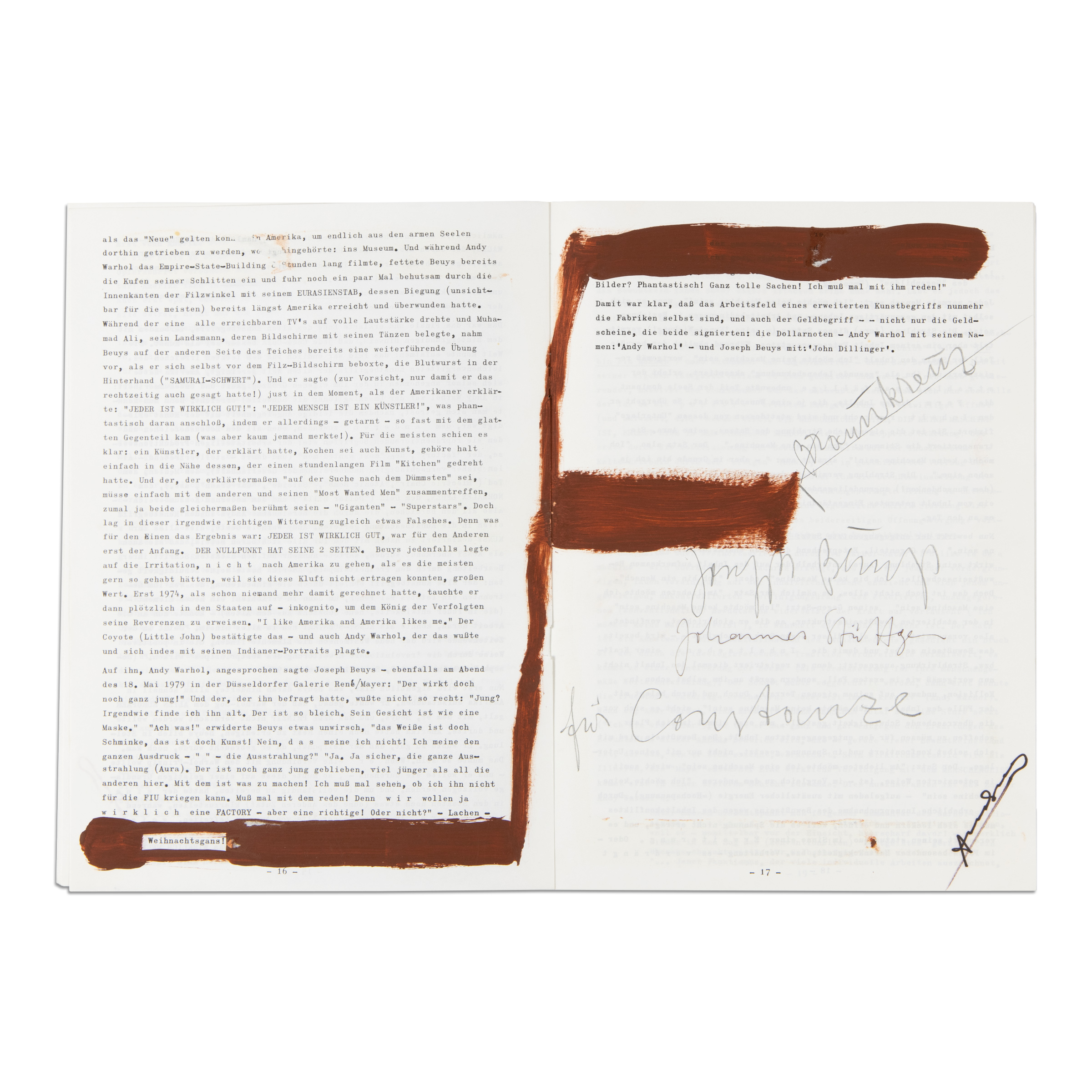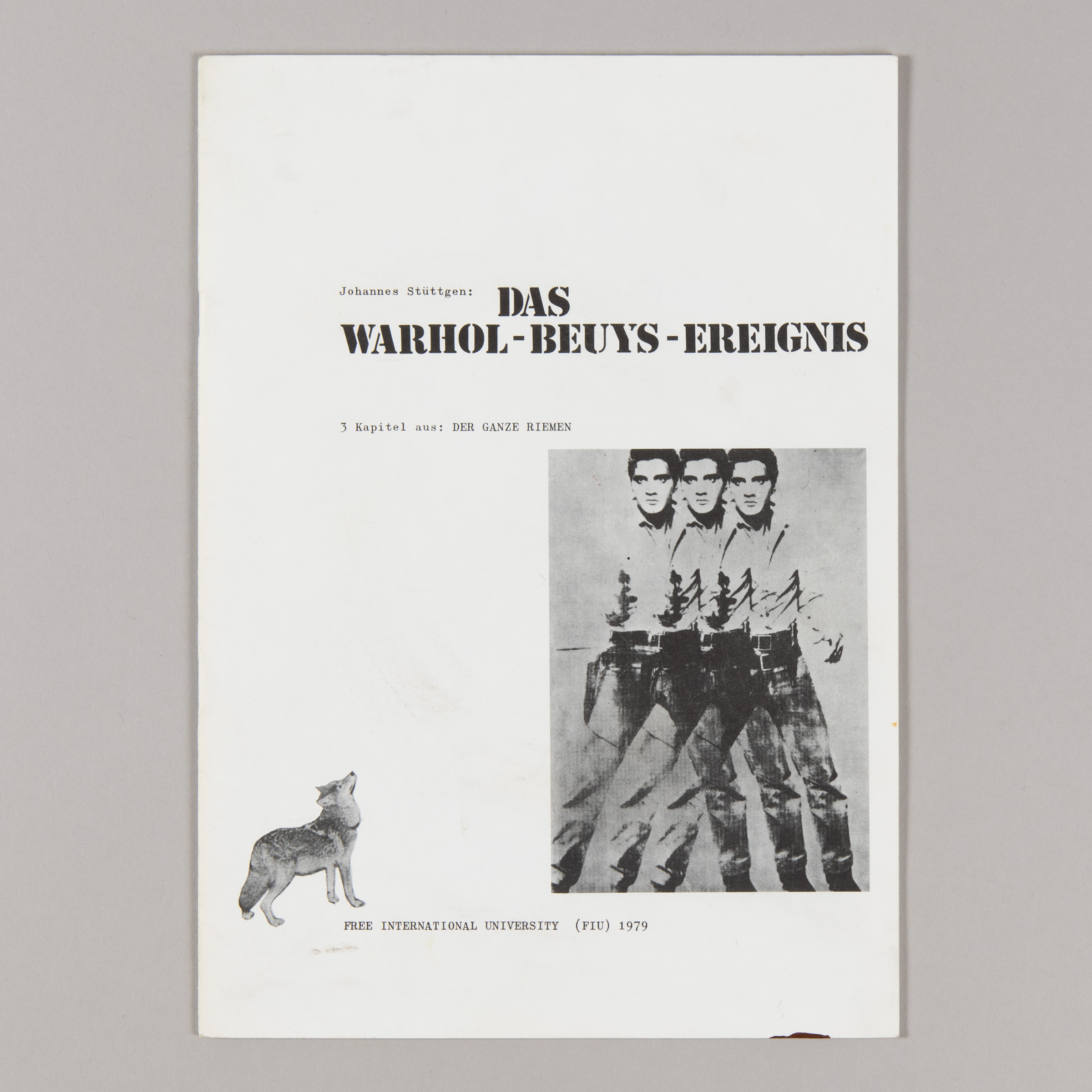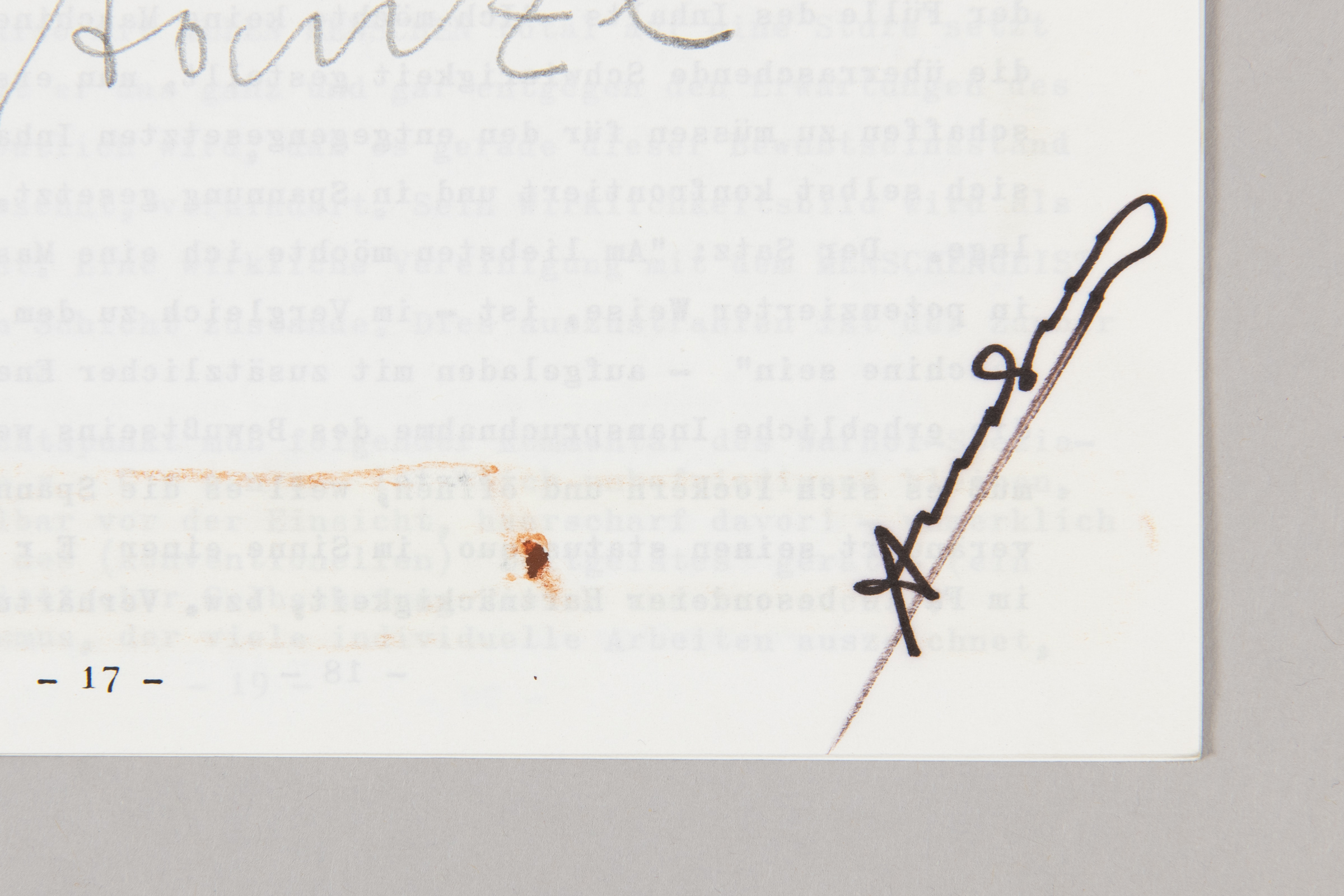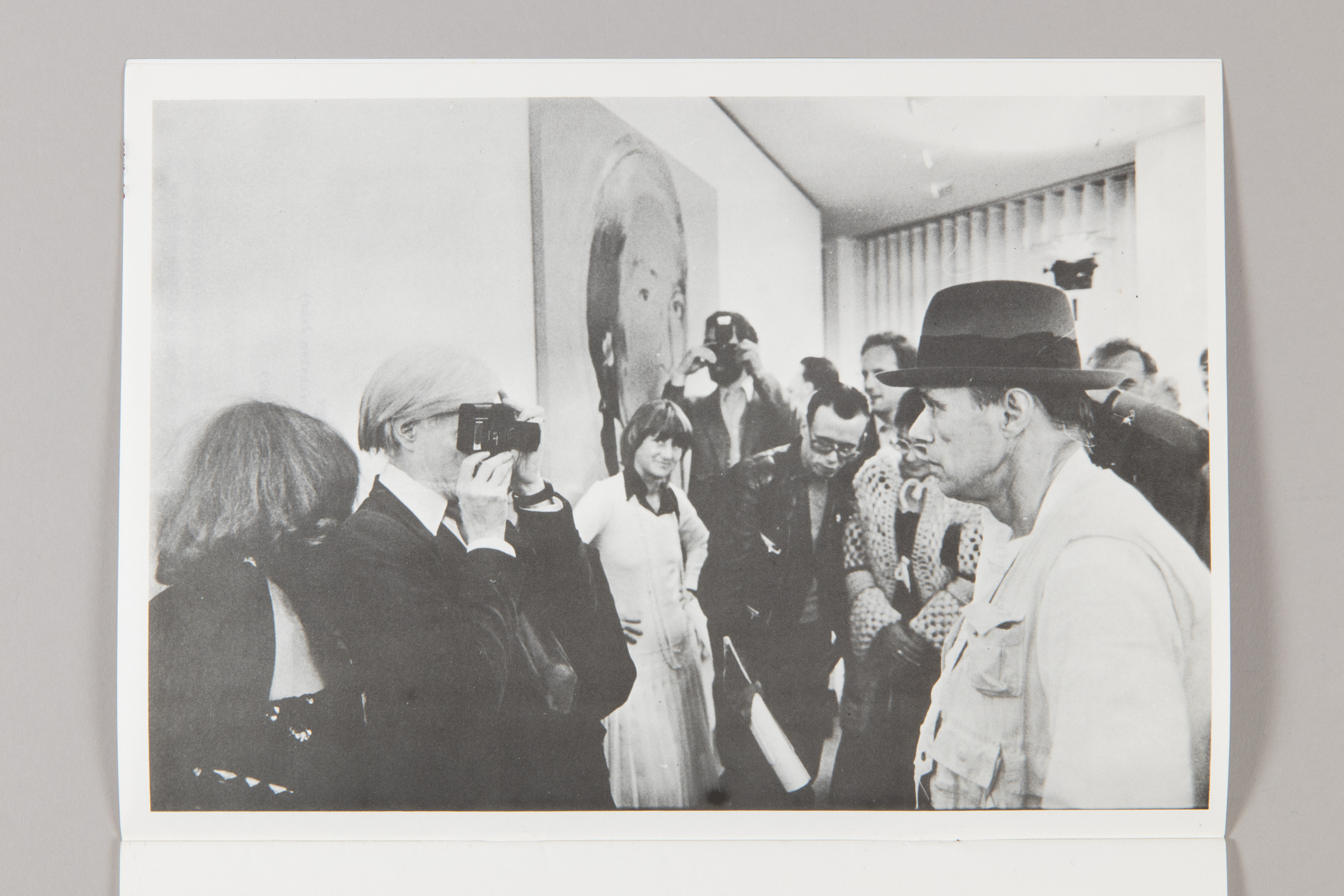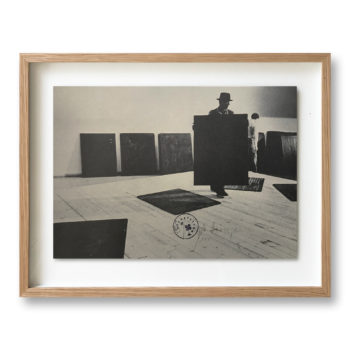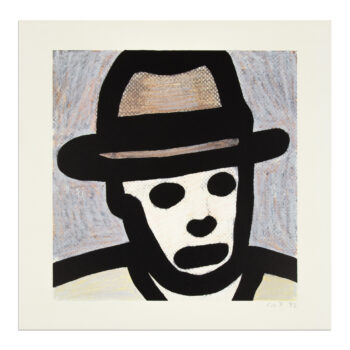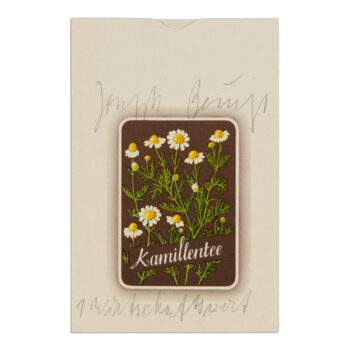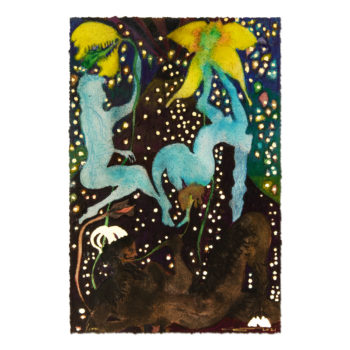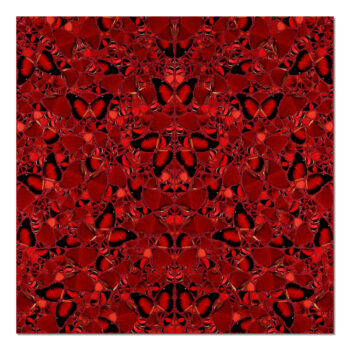Joseph Beuys, Das Warhol-Beuys-Ereignis
During the first meeting of Joseph Beuys and Andy Warhol in Düsseldorf in 1979, this edition of Das Warhol-Beuys-Ereignis was hand-signed by the two artists and Beuys’ master student Johannes Stüttgen. Additionally, this edition is dedicated to “Constanze”, another student of Joseph Beuys.
Joseph Beuys, widely regarded as one of the most influential artists of the postwar period, left an indelible mark on the art world with his multifaceted and thought-provoking body of work. At the heart of Beuys’ artistic endeavors were profound concepts rooted in social philosophy, humanism, and anthroposophy, which he seamlessly wove into various mediums and art forms. Joseph Beuys was a true artistic polymath, leaving no stone unturned in his quest to challenge conventional boundaries. His artistic repertoire spanned across Fluxus, happenings, performances, sculptures, installations, and drawings, reflecting his wide-ranging creative pursuits. Additionally, Beuys saw editions as crucial tools for democratizing art, enabling his ideas and artworks to reach a broader audience beyond traditional galleries and museums. By producing limited edition prints and multiples, Beuys extended his artistic and philosophical concepts into more accessible formats, which were integral to his vision of art as a vehicle for social change. These editions, often incorporating unconventional materials and symbols, allowed him to disseminate his ideas on a larger scale and engage directly with the public, thus fulfilling his belief that everyone is an artist. Central to Joseph Beuys’ ideology was the belief that art need not be confined to a specialized profession. Instead, he proposed that art should be a heightened humanitarian attitude, a way of life that permeated every facet of daily existence. His visionary approach paved the way for a new era in which art intersected with political activism and social commentary, blurring the lines between art and life itself. Among Beuys’ most iconic artworks are those that incorporate animal fat and felt, materials that became symbolic of the interconnectedness between art, everyday materials, and quotidian aspects of life. Through his innovative use of materials and engagement with multiple forms of expression, Joseph Beuys challenged traditional perceptions of art, asserting that art was not a distant or elitist pursuit but a fundamental part of human existence. A monumental retrospective of Joseph Beuys at the Solomon R. Guggenheim Museum in New York in 1979 cemented his status on the international stage. After the artist’s passing in 1986, his work has continued to be exhibited in a multitude of major institutions, including the Museo Nacional Centro de Arte Reina Sofia in Madrid, Centre Pompidou in Paris, Tate Modern in London, National Gallery of Victoria in Melbourne, Hamburger Bahnhof in Berlin, and the Scottish National Gallery of Modern Art in Edinburgh.
